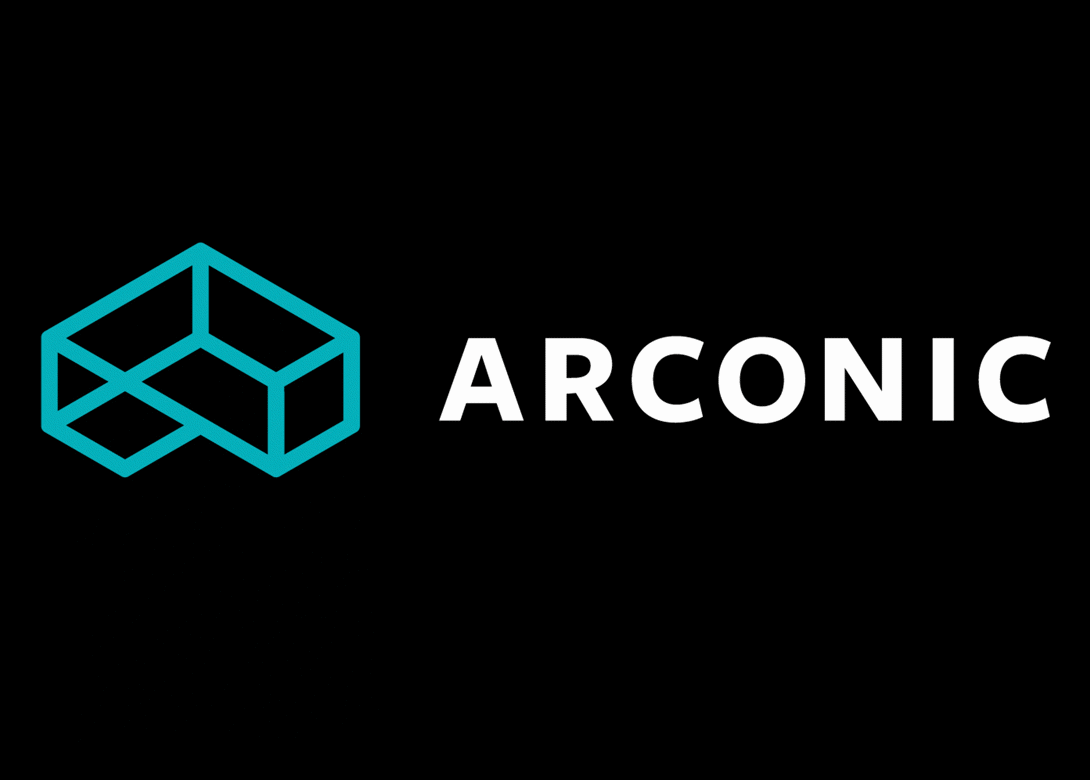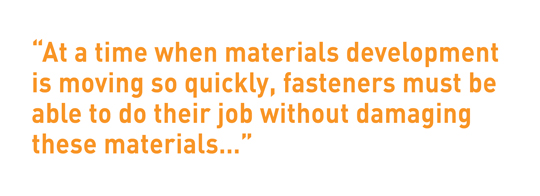
Jonathan Craven, operations director for Arconic Telford
Joining materials in safety critical applications should not be underestimated. A fastener that costs a tiny fraction of the total bill of materials could have catastrophic and expensive consequences if it should fail, making it vital to the integrity of a product.
Materials technology has always been ahead of the joining technology available. It is as inescapable as it is inevitable, and it means that fastener technology is constantly being forced forward.
There are plenty of standard fastening components available from catalogues for standard applications, but these are not suitable for the core market that is currently showing such potential in Europe, which also happen to be the markets served by Arconic Fastening Systems & Rings (ARCONIC). Our position is that if two materials can be joined by a standard nut and bolt, then use a standard nut and bolt. However, if the requirement is for hostile and demanding applications, with varied and new materials, using multi-functional fastening solutions, then more expertise is required. This is the end of the market that is most innovative, demanding and exciting. Usually it includes applications where risk is attached – or at least reliability is non-negotiable.
Aerospace, rail, and renewable energy all come into this category but automotive, with its drive towards lightweighting and alternative materials, is at the forefront. Fastening together sheets of steel is straightforward until it becomes sufficiently thin (less than 2mm) so that the fastener, or fastening process, could adversely affect the performance of the material. The same is true of composites. Inappropriate fastening can result in hoop stress being formed round the fastener, which can generate crack propagation and other damage to the materials.

Arocnic is uniquely positioned to do this with its team of engineers in the UK and a technology centre in Pittsburgh, USA, which provides global customer support. At a time when materials development is moving so quickly, fasteners must be able to do their job without damaging these materials - there is no point of having high-quality fasteners and high-quality materials if the former is going to damage the latter. Compatibility is all important.
Other trends are emerging. We are being faced with more ‘aggressive’ wish lists from industry, particularly with regards to product predictability (inside the joint) and also installation accountability. PPAP (Production Part Approval Process) is an example of the first of these. Used in the automotive industry, the customer is given a full breakdown for each part – not just its dimensions but how and where it is made, what materials are used and where do they come from. It essentially becomes a contract with the customer that we suppliers can be audited against. Having started in automotive this methodology is now being adopted in many other sectors.
Installation accountability is on the same lines. It has emerged in such areas as high end transportation where they are looking for more information about the installation method. Arconic provides a hydraulic installation system that also includes identification of the operator, the tool, the batch of fasteners, and a forced displacement curve for the installation. Therefore, should a rail company be audited by one of the national rail boards, they can provide certificated evidence to say that fastener was installed by a qualified person on particular day from a certain batch. It is an echo of the requirements of the aerospace industry, where traceability is a huge issue. Installation is in itself another issue that can be overlooked – engineers tend not to think about design for manufacture when it comes to fasteners, but particularly in the application areas discussed here, fasteners must not be viewed as a component, rather that fastening must be seen as a system. The majority of fasteners require a dedicated machine to install them. The capital cost of this machine must be taken into account when specifying the fastener, but also in the actual design the machine needs to be able to access the site of the fastener.

This ties in with the over-riding trend with these demanding, safety critical applications – the engineers are looking for solutions. If that requires a bespoke fastener or installation system, Arconic has the set-up, the manufacturing and engineering knowledge to provide them.
It means the functional performance of the products can be designed in at a metallurgical level, shaped by the manufacturing methods, special heat treatment processes and special grades of material.
If I was to look back from the year 2020, for all of the advances we are seeing in fastener technology, I think the most remarkable shift will be in productivity. Whether it is with us suppliers and our turnaround times, with the design to prototype cycle or most particularly with the product manufacture itself, which will of course include more automation of fastener installation. Closer collaboration in this case between supplier, designer and manufacturer is clearly the key to its success.

Having spent a decade in the fastener industry experiencing every facet – from steel mills, fastener manufacturers, wholesalers, distributors, as well as machinery builders and plating + coating companies, Claire has developed an in-depth knowledge of all things fasteners.
Alongside visiting numerous companies, exhibitions and conferences around the world, Claire has also interviewed high profile figures – focusing on key topics impacting the sector and making sure readers stay up to date with the latest developments within the industry.





